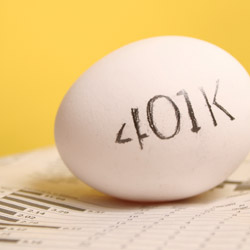Whatever Happened to Pensions?

Thirty years and a gold watch. Remember those days? The retiring employee also typically left with a pension.
The Evolution of Retirement Plans
The typical pension is a defined benefit plan that bases benefit payments on a pre-determined formula (usually involving years of service and pre-retirement income level). The responsibility for the pension is on the employer, while limiting variables the employee needs to monitor as he or she works toward retirement.
In recent years, we’ve seen a switch from defined benefit (pension) plans to defined contribution plans. Defined contribution plans are just that—a defined amount of money contributed by the employee into his or her account. The most common type of defined contribution plan is the 401(k). Employers often “match” your contributions up to a certain percent.
These types of plans have a high level of employee responsibility. Because most people don’t expect to work for one employer for their entire careers, portability is a real benefit of the defined contribution plan. When changing employers, you may be able to “roll over” the money into your new employer’s plan or into a plan with a financial institution. Consequently, defined contribution plans allow greater control of your retirement assets.
Defined contribution plans aren’t without pitfalls. Some people are uncomfortable making investment decisions because they don’t feel knowledgeable about the markets. Others are overly emotional and make impulsive decisions during times of market turmoil, while some simply chase investment returns. And during periods of financial hardship, some may be tempted to reduce their contributions, thus reducing their retirement nest eggs.
Planning Doesn’t End At Retirement
Pensions pay a set monthly income. With defined contribution plans, there is no guaranteed income stream at retirement. The amount depends on how much you’ve accumulated through contributions, the employer match and investment returns. Before retiring, you need to determine if this amount is enough to support you during your retirement years.
The next hurdle is creating a specific plan for your retirement years. Most advisors recommend an annual distribution rate of three to four-and-a-half percent, with some money still invested in stocks for potential growth.
Depending on the size of your defined contribution plan portfolio, it may not generate enough income to maintain your standard of living, especially with people living longer. Ultimately, this leaves many yearning for the type of guaranteed income offered under pension plans.
Possible Solutions
There are certain insurance and investment-based solutions that offer guaranteed income for life called annuities. While not an answer to all problems due to fees and restrictions, annuities may be a possible solution for a portion of your retirement dollars.
Other possibilities include professional investment management of your retirement dollars, single-premium life insurance, working longer and/or living on a lower income stream.
No decision about your retirement assets should be made lightly. You’ve worked hard to accumulate your retirement funds and need a plan that’s designed for your particular situation. No matter where you are in your career or retirement, I encourage you to talk to your trusted advisor. The Peoria area has a number of reputable and knowledgeable financial professionals to help you, no matter where you’re starting from. iBi

